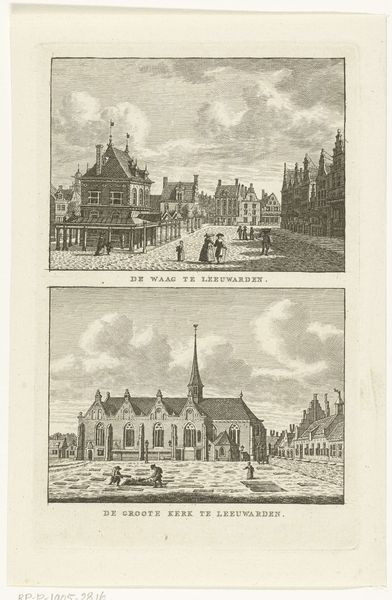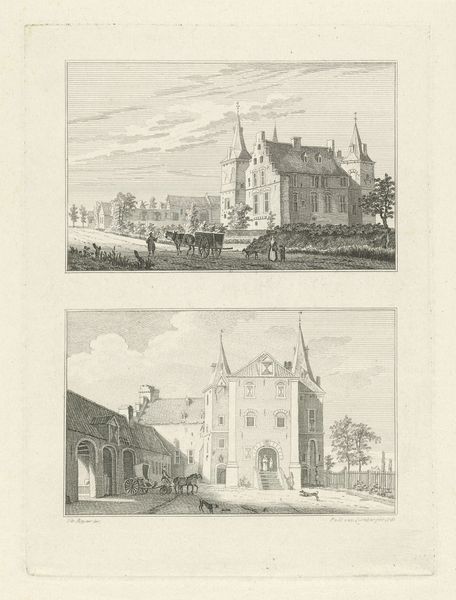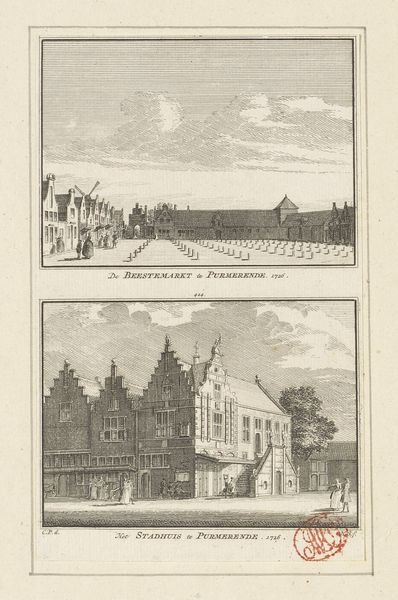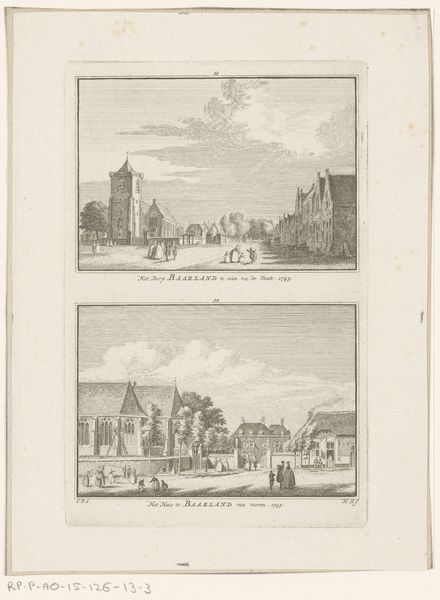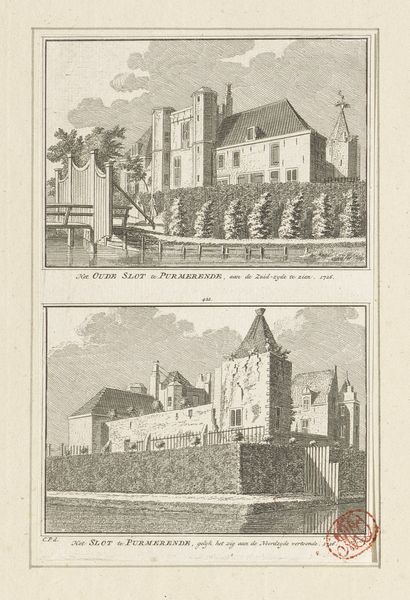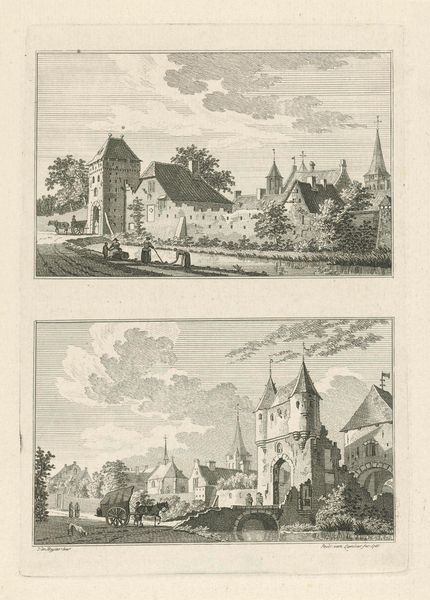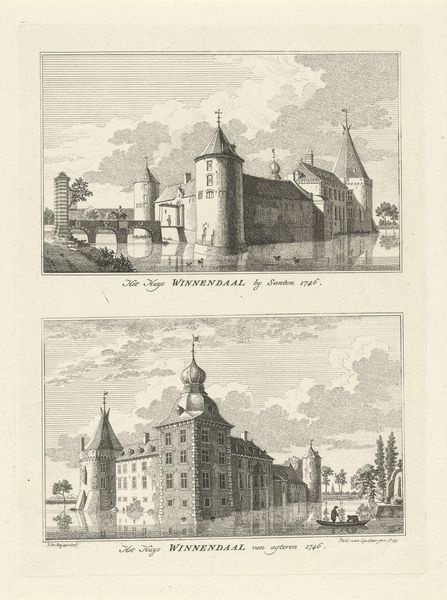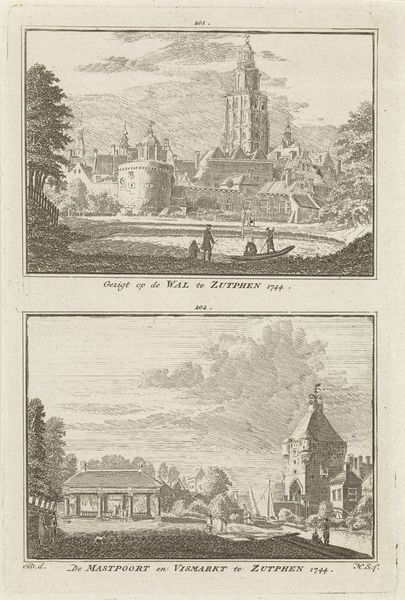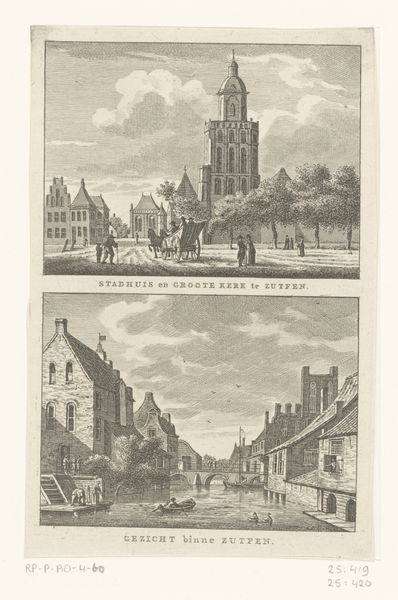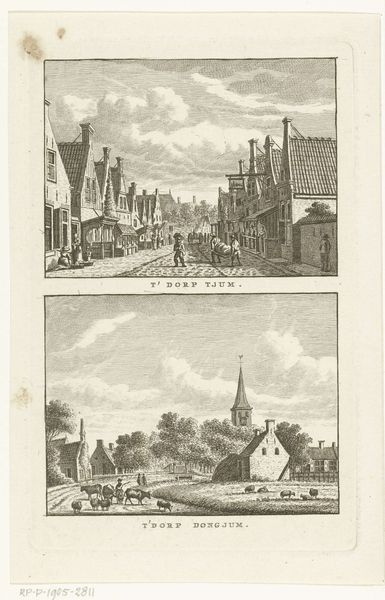
print, engraving, architecture
#
dutch-golden-age
# print
#
old engraving style
#
landscape
#
cityscape
#
engraving
#
architecture
#
realism
Dimensions: height 203 mm, width 147 mm
Copyright: Rijks Museum: Open Domain
Curator: What a striking composition. Before us, we have a 1760 print by Paulus van Liender entitled 'Kasteel Boetzelaer nabij Kalkar, 1746,' rendered in a precise engraving style. Editor: It feels like a memory, faded and carefully preserved. The detail is quite extraordinary, and you can sense the sheer weight of history etched into those lines. I’m curious about the conditions in which the original structure and image were made. Curator: Indeed, the crispness of the lines belies the density of visual information. Note the calculated arrangements in two distinct vignettes—one emphasizing the castle’s imposing island setting and the other, a closer, more inhabited courtyard view. Semiotically, the verticality speaks of power, and the horizontal plane symbolizes a realm of natural extension, an order of structure in constant change. Editor: You speak of verticality, I am more drawn to its flatness. The perspective, in both registers, almost fights against natural depth. One thinks of how this castle has been shaped, literally quarried and put together. From the earth itself, in labour. What’s also suggested is a ruling class able to procure materials to this scale. The engraving style in itself is telling. Curator: Precisely, we find the interplay of architectural and natural elements. Liender is keenly aware of positive and negative space—the buildings punctuating the sky, mirrored in the water's placid surface. Note how line dictates tone here: darker aggregations giving way to sparse arrangements to create form and cast a pallid depth, the illusion of it anyway. Editor: The etching itself speaks to craft. Someone physically layering meaning onto this copper plate or some other material; think about their skill but also their relationship to those owning this palace. The level of detail suggests the engraver knew this very location or researched every element minutely. Consider all that work. What of it now? Curator: Yes, it also presents us with a fascinating problem regarding perception itself—how to reconcile, interpret, and finally understand, such diverse artistic intentions united under a common roof—or rather, floating above the castle on a page. Editor: Maybe in its materiality, then, this ‘engraving’ asks us how buildings of significance and luxury are achieved—how images are shaped. Something about that for sure stays resonant today. Curator: Very true.
Comments
No comments
Be the first to comment and join the conversation on the ultimate creative platform.
